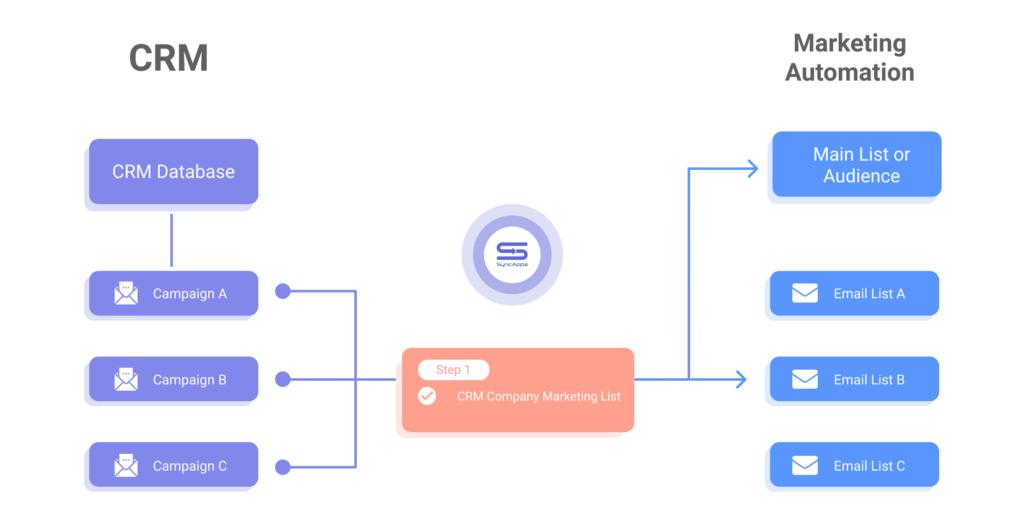
CRM Marketing Segmentation: Your Ultimate Guide to Customer Relationship Success
In the dynamic realm of modern marketing, understanding your customers is no longer a luxury; it’s a necessity. This is where CRM marketing segmentation comes into play, transforming the way businesses interact with their audience. This comprehensive guide delves into the depths of CRM marketing segmentation, offering insights, strategies, and practical advice to help you harness its power and drive unparalleled customer relationship success. We’ll explore what segmentation is, why it’s crucial, and, most importantly, how you can implement it effectively within your CRM system.
What is CRM Marketing Segmentation?
At its core, CRM marketing segmentation is the process of dividing your customer base into distinct groups based on shared characteristics. These characteristics can range from demographics and purchase history to behavior patterns and preferences. The goal is to create more targeted and personalized marketing campaigns that resonate with each segment, increasing engagement, conversion rates, and customer loyalty. Think of it as tailoring a suit: you wouldn’t offer the same size and style to everyone. Instead, you’d take measurements, consider individual preferences, and create something that fits perfectly.
The Building Blocks of Segmentation
Effective segmentation relies on identifying the key factors that differentiate your customers. These factors can be categorized as follows:
- Demographics: This includes age, gender, income, education, occupation, and location. It provides a foundational understanding of who your customers are.
- Psychographics: This delves into your customers’ lifestyles, values, attitudes, and interests. Understanding psychographics allows you to create campaigns that align with their motivations and aspirations.
- Behavioral: This focuses on how customers interact with your brand, including their purchase history, website activity, engagement with your marketing materials, and customer service interactions. This data is invaluable for predicting future behavior.
- Geographic: This considers the location of your customers, which can be crucial for localized marketing efforts, product availability, and regional preferences.
Why is CRM Marketing Segmentation Important?
The benefits of CRM marketing segmentation are numerous and far-reaching. Here are some of the key advantages:
Enhanced Personalization
Segmentation allows you to create highly personalized marketing messages. Instead of sending generic emails or displaying irrelevant ads, you can tailor your content, offers, and recommendations to the specific needs and interests of each segment. This level of personalization significantly increases the likelihood of engagement and conversion.
Improved Targeting
By understanding the characteristics of each segment, you can target your marketing efforts more effectively. This means you’re reaching the right people with the right message at the right time, maximizing your return on investment (ROI) and minimizing wasted resources.
Increased Customer Loyalty
Personalized experiences foster stronger customer relationships. When customers feel understood and valued, they’re more likely to remain loyal to your brand. Segmentation helps you build these lasting relationships by providing relevant and timely interactions.
Higher Conversion Rates
Targeted marketing campaigns are inherently more effective than generic ones. By addressing the specific needs and desires of each segment, you can significantly increase your conversion rates, leading to higher sales and revenue.
Optimized Marketing Spend
Segmentation helps you allocate your marketing budget more efficiently. Instead of spreading your resources thinly across a broad audience, you can focus on the segments that are most likely to convert, maximizing your ROI and minimizing wasted spend.
Better Customer Insights
The segmentation process itself provides valuable insights into your customer base. By analyzing the characteristics of each segment, you can gain a deeper understanding of their needs, preferences, and behaviors, which can inform product development, customer service strategies, and overall business decisions.
How to Implement CRM Marketing Segmentation
Implementing CRM marketing segmentation involves several key steps:
1. Define Your Objectives
Before you start segmenting, it’s essential to define your goals. What do you hope to achieve through segmentation? Are you aiming to increase sales, improve customer retention, or drive website traffic? Your objectives will guide your segmentation strategy and help you measure your success.
2. Choose Your Segmentation Criteria
Based on your objectives, select the segmentation criteria that are most relevant to your business. Consider demographics, psychographics, behavioral data, and geographic location. The choice of criteria will depend on your industry, product or service, and the data you have available.
3. Collect and Analyze Customer Data
Gather data from various sources, including your CRM system, website analytics, social media platforms, and customer surveys. Analyze this data to identify patterns and trends that can be used to segment your customer base. Data quality is paramount at this stage; ensure your data is accurate, complete, and up-to-date.
4. Create Your Segments
Based on your analysis, create distinct customer segments. Give each segment a descriptive name that reflects its key characteristics. For example, you might have segments like “High-Value Customers,” “New Leads,” or “Loyal Subscribers.” The number of segments you create will depend on your business and the complexity of your customer base. Start with a manageable number of segments and refine them over time.
5. Develop Targeted Marketing Campaigns
Once you’ve created your segments, develop marketing campaigns that are tailored to each one. This includes creating personalized content, offers, and calls to action. Consider the specific needs, interests, and behaviors of each segment when crafting your messaging. Use your CRM system to automate the delivery of these campaigns.
6. Test and Optimize
Continuously test and optimize your segmentation strategy. Monitor the performance of your campaigns and make adjustments as needed. Analyze your results to identify what’s working and what’s not. Regularly review your segments to ensure they remain relevant and effective. Experiment with different segmentation criteria and campaign approaches to maximize your results.
Tools and Technologies for CRM Marketing Segmentation
Numerous tools and technologies can help you implement CRM marketing segmentation effectively:
CRM Systems
A robust CRM system is essential for managing customer data and executing segmentation strategies. Popular CRM platforms include Salesforce, HubSpot, Zoho CRM, and Microsoft Dynamics 365. Choose a CRM system that meets your specific needs and integrates seamlessly with your other marketing tools.
Marketing Automation Platforms
Marketing automation platforms, such as Marketo, Pardot, and ActiveCampaign, allow you to automate your marketing campaigns, including email marketing, social media marketing, and lead nurturing. These platforms often have built-in segmentation capabilities.
Data Analytics Tools
Data analytics tools, such as Google Analytics, Tableau, and Power BI, can help you analyze customer data and identify patterns that can be used for segmentation. These tools provide valuable insights into customer behavior and campaign performance.
Email Marketing Platforms
Email marketing platforms, such as Mailchimp, Constant Contact, and Sendinblue, allow you to segment your email lists and send targeted email campaigns. These platforms often offer advanced segmentation features based on subscriber behavior and demographics.
Best Practices for CRM Marketing Segmentation
To maximize the effectiveness of your CRM marketing segmentation efforts, consider these best practices:
Start Small and Iterate
Don’t try to segment your entire customer base at once. Start with a few key segments and gradually expand your efforts as you gain experience and insights. Continuously iterate and refine your segmentation strategy based on your results.
Focus on Actionable Segments
Create segments that are actionable, meaning you can use them to develop targeted marketing campaigns. Avoid creating segments that are too broad or too narrow to be useful.
Keep Your Segments Up-to-Date
Customer behavior and preferences change over time, so it’s essential to keep your segments up-to-date. Regularly review your segments and update them based on new data and insights.
Personalize Your Messaging
The key to successful segmentation is personalization. Tailor your marketing messages to the specific needs and interests of each segment. Use personalized content, offers, and calls to action to maximize engagement and conversion.
Measure Your Results
Track the performance of your segmented marketing campaigns and measure your results. This will help you identify what’s working and what’s not, and make data-driven decisions to optimize your strategy. Key metrics to track include open rates, click-through rates, conversion rates, and ROI.
Respect Customer Privacy
Always respect customer privacy and comply with data privacy regulations, such as GDPR and CCPA. Be transparent about how you collect and use customer data, and provide customers with the option to opt out of marketing communications.
Common CRM Marketing Segmentation Strategies
Here are some common segmentation strategies you can implement:
RFM Analysis
RFM (Recency, Frequency, Monetary Value) analysis is a popular segmentation technique that helps you identify your most valuable customers. It involves analyzing customer purchase behavior based on how recently they made a purchase (Recency), how often they make purchases (Frequency), and how much they spend (Monetary Value).
Customer Lifetime Value (CLTV) Segmentation
CLTV segmentation involves dividing your customers into segments based on their predicted lifetime value. This allows you to prioritize your marketing efforts on your most valuable customers and tailor your messaging to maximize their long-term value.
Behavioral Segmentation
Behavioral segmentation involves dividing customers based on their behavior, such as purchase history, website activity, and engagement with your marketing materials. This allows you to create highly targeted campaigns based on what your customers are actually doing.
Needs-Based Segmentation
Needs-based segmentation involves dividing customers based on their needs and preferences. This requires understanding your customers’ pain points, goals, and motivations. This allows you to create campaigns that address their specific needs.
Geographic Segmentation
Geographic segmentation involves dividing customers based on their location. This allows you to create localized marketing campaigns, such as targeting customers with offers specific to their region or delivering personalized content based on their language or culture.
Examples of CRM Marketing Segmentation in Action
Let’s look at a few examples of how businesses are successfully using CRM marketing segmentation:
E-commerce
An e-commerce store might segment its customers based on purchase history, creating segments such as “Frequent Buyers,” “First-Time Buyers,” and “Abandoned Cart Users.” They could then send personalized emails offering exclusive discounts to frequent buyers, providing helpful tips to first-time buyers, and reminding abandoned cart users of the items they left behind. This approach boosts sales and enhances the customer experience.
Software as a Service (SaaS)
A SaaS company could segment its users based on their usage patterns, creating segments such as “Free Trial Users,” “Active Users,” and “Inactive Users.” They could then offer tailored onboarding materials and product tips to free trial users, provide advanced features and support to active users, and send re-engagement emails to inactive users to encourage them to return. This method improves customer retention and increases revenue.
Financial Services
A financial services company could segment its customers based on their financial goals, creating segments such as “First-Time Homebuyers,” “Retirement Savers,” and “Investors.” They could then offer personalized financial advice and product recommendations tailored to each segment’s specific needs. This strategy builds trust and strengthens customer relationships.
Challenges and Solutions in CRM Marketing Segmentation
While CRM marketing segmentation offers many benefits, it’s not without its challenges. Here are some common hurdles and how to overcome them:
Data Quality Issues
Challenge: Inaccurate, incomplete, or outdated data can undermine your segmentation efforts.
Solution: Implement data cleansing processes, validate data regularly, and integrate data from multiple sources to ensure data accuracy.
Lack of Resources
Challenge: Limited resources, such as time, budget, and expertise, can hinder your segmentation efforts.
Solution: Start small, focus on a few key segments, and leverage automation tools to streamline your processes. Consider outsourcing certain tasks if needed.
Resistance to Change
Challenge: Resistance from internal teams to adopt new strategies or tools can slow down the implementation process.
Solution: Communicate the benefits of segmentation clearly, provide training and support, and involve stakeholders in the process to foster buy-in.
Data Privacy Concerns
Challenge: Protecting customer data and complying with privacy regulations can be complex.
Solution: Implement robust data security measures, obtain customer consent where required, and adhere to all relevant privacy laws and regulations.
The Future of CRM Marketing Segmentation
The field of CRM marketing segmentation is constantly evolving. As technology advances and customer expectations change, we can expect to see the following trends:
Increased Personalization
Expect even higher levels of personalization, with AI and machine learning being used to predict customer behavior and tailor marketing messages in real-time.
More Data-Driven Decisions
Segmentation will become even more data-driven, with businesses leveraging advanced analytics to gain deeper insights into customer behavior.
Cross-Channel Integration
Marketing efforts will become more integrated across multiple channels, creating a seamless customer experience.
Focus on Customer Experience
The emphasis will shift towards creating exceptional customer experiences that drive loyalty and advocacy.
Conclusion: Embrace the Power of Segmentation
CRM marketing segmentation is a powerful strategy for building stronger customer relationships and driving business growth. By understanding your customers, tailoring your messaging, and measuring your results, you can create marketing campaigns that resonate with your audience and achieve your business objectives. Embrace the power of segmentation and transform your customer relationships into a source of sustainable success.


